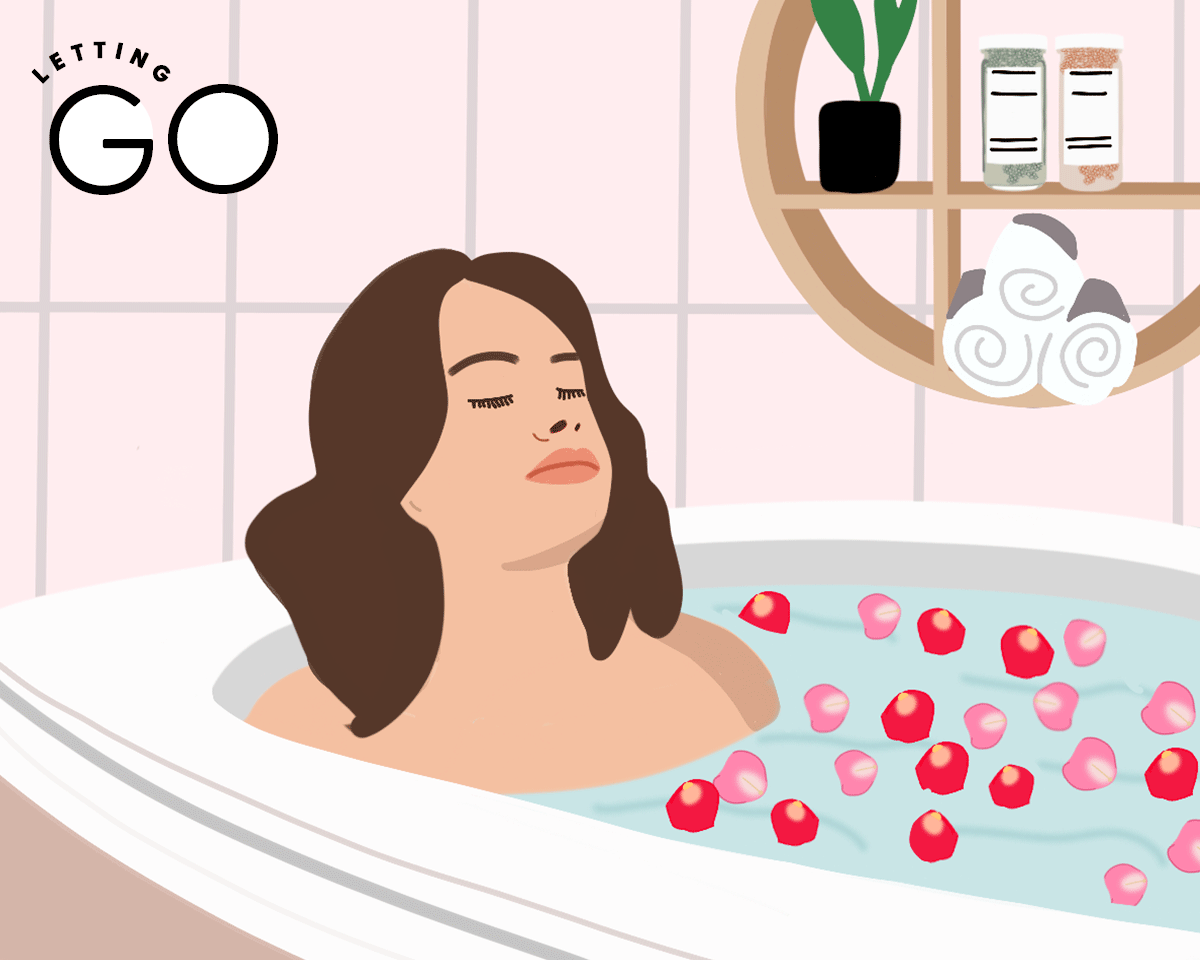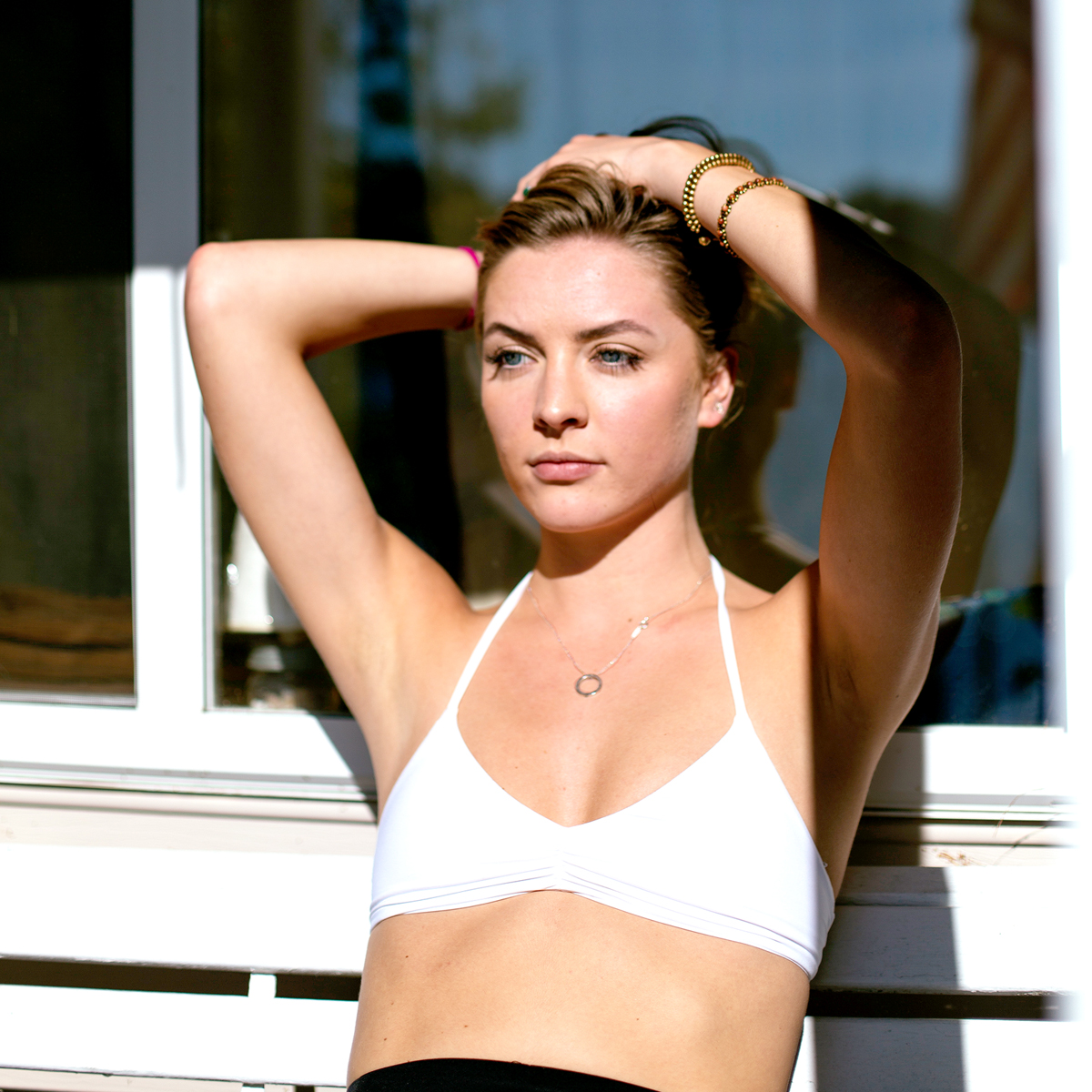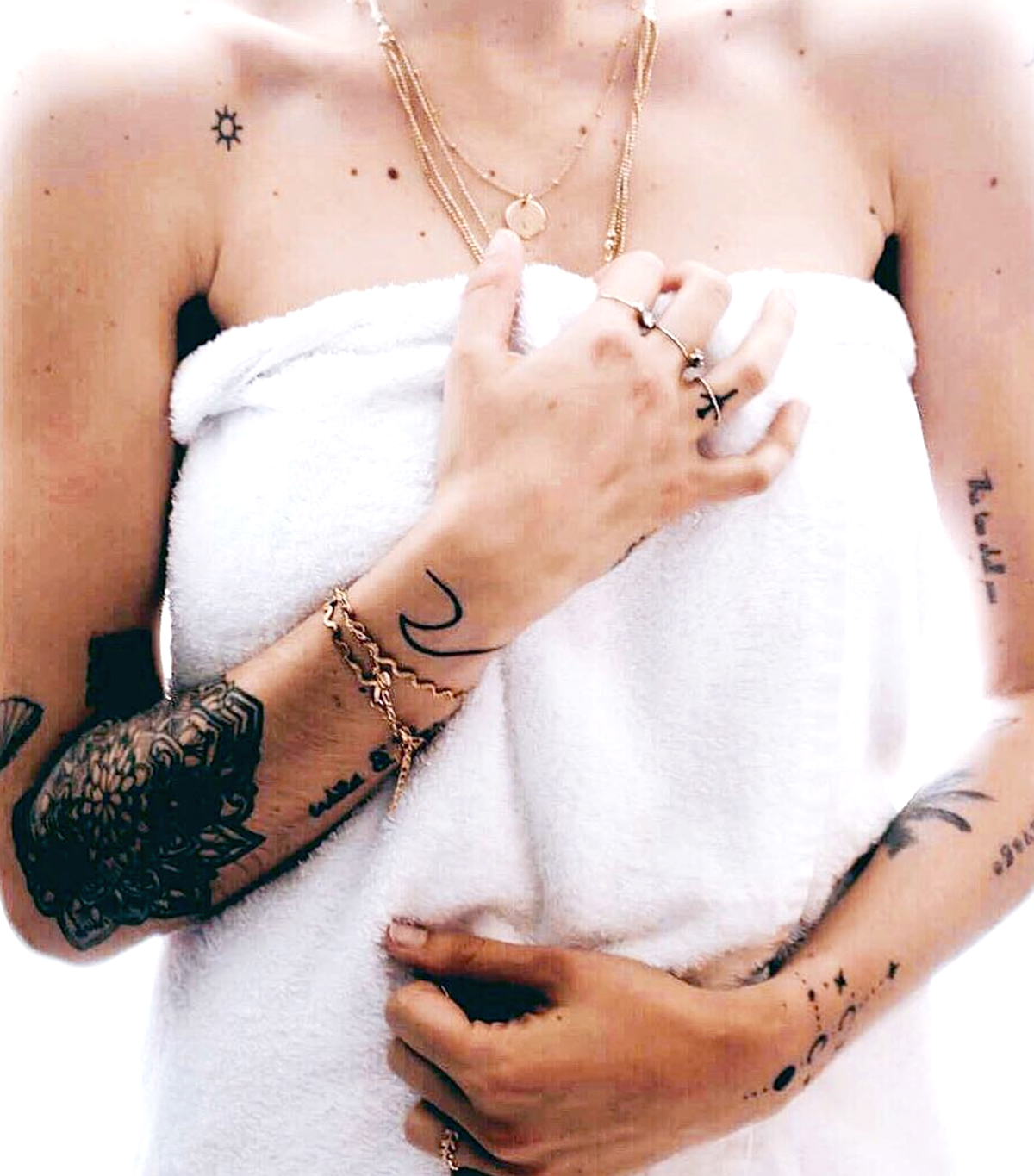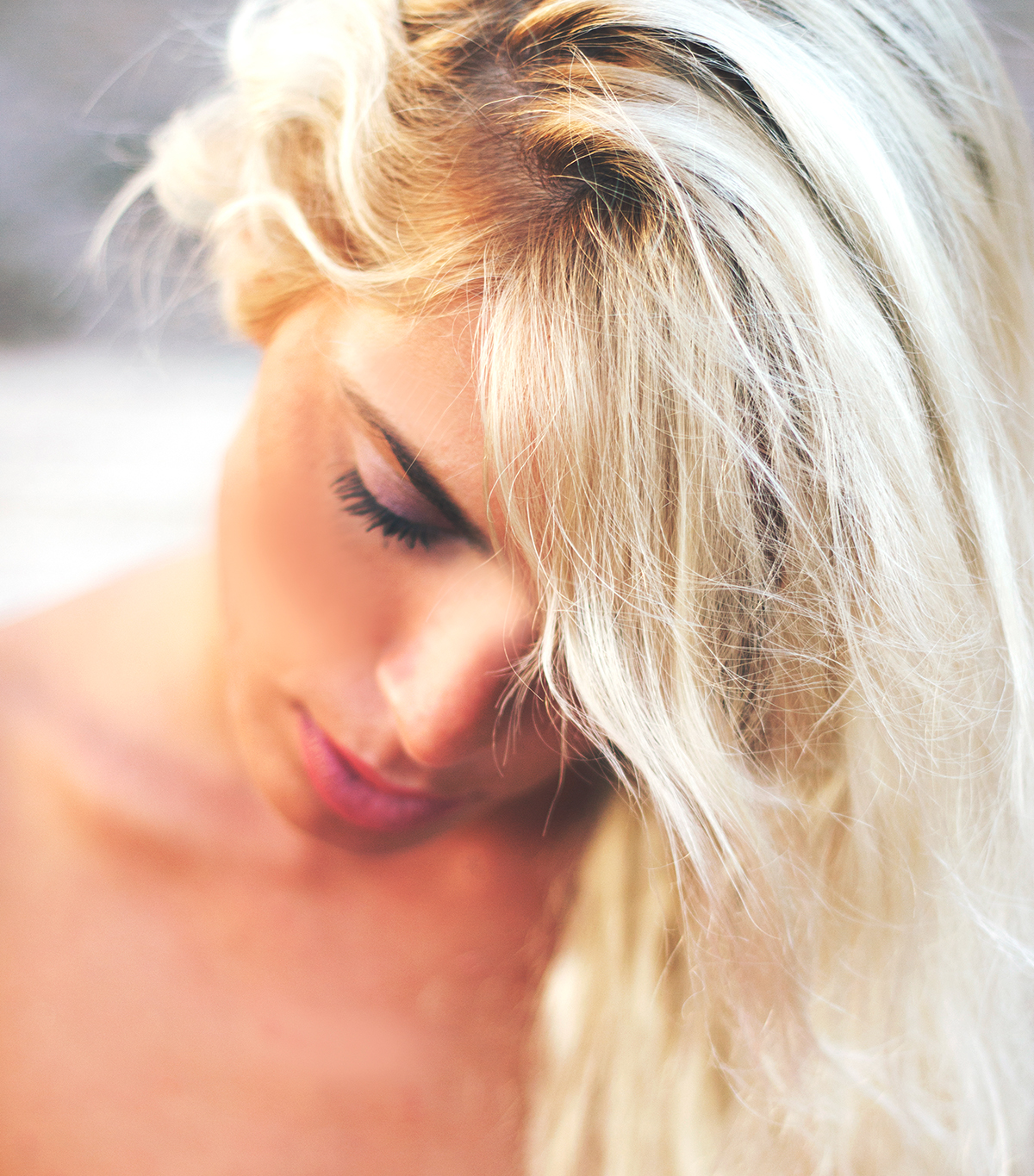True Story: I Was Addicted to Spray Tanning, and I'm Finally Letting Go


What does it really mean to let go? When we turned this question over to our editors and readers, their responses proved that grief, catharsis, and rebirth comes in all forms—whether it’s finally moving on from a failed relationship, rebuilding oneself after a painful trauma, or quietly saying goodbye to the person you once were. Our series, Letting Go, highlights these compelling and complicated stories.

Objectively, I realize how an addiction to dousing myself with self-tanner sounds borderline hilarious. Silly. Trivial. Grotesquely superficial. And perhaps even ungrateful. Wow, an upper-middle-class white woman from the Minnesotan suburbs complaining about her pale skin? I can, quite clearly, hear the judgmental reverberations now.
Yes, I agree that my dependence on tinting the color of my skin darker, if set in different context, could pose as ideal fodder for a satirical Saturday Night Live–meets–Real Housewives skit making fun of everything that’s wrong with the sharp, double-edged swords of today’s beauty standards. But while I recognize it may initially seem off-base (like “way out in center field” off-base) to complain about the lightness of my skin, that’s not the point of this essay. No, not at all.
And quite honestly, it took a long time for me to accept that this was a topic I could feel comfortable writing about, both ethically and in today’s social climate. However, just as a disease like an eating disorder typically doesn’t have that much to do with something as obvious as food, my addiction to covering up my skin doesn’t really have anything to do with its natural color. Instead, it was actually born from something quite simple. A knee-jerk reaction to a trait I was told was, and ultimately understood to be, an undesirable flaw.
Combine that with a slightly addictive, perfectionistic personality, and it’s a recipe for an unfounded, slightly disturbing insecurity. But the thing is that’s something I can’t help.

We all have something: that one inherent feature that for one reason or another feels tender and vulnerable—something that at one point or another, and perhaps without any ounce of objective legitimacy, we learn to internalize as wrong or embarrassing.
For many, middle school is far from a cakewalk—a pubescent petri dish filled with scrutiny and comparison, social interactions between the young and the awkward that become a breeding ground for self-doubt. And while middle school may only last a short three years—a miniscule chapter in the grand scheme of things—insecurities can hang on indefinitely, plaguing us for weeks, months, and even years. At 24, I’m living proof, and I know I’m not alone.
Up until middle school, I had never given my freckled, ultra-fair skin a second glance. I knew I had a certain knack for turning into a blistering tomato after too much time in the sun, and I noticed with curiosity that even the lightest shade of makeup looked a tad too dark during my yearly dance recitals. I didn’t realize that this was something I should feel insecure about. My mom and I shared the same porcelain skin tone, and I only ever thought she was incomparably beautiful. In fact, I still remember the day she took me to the counter at Macy’s (in anticipation of said dance recitals) so that I could find my foundation shade. Did it bother me that I went home with the lightest possible shade the brand offered? Not in the least. Because, honestly, why should it have?
However, around the spring of eighth grade, I came to an ugly realization that my borderline fluorescently white skin bothered other people. I was mercilessly teased. Enduring flippant, hurtful comments became a part of my daily existence, and honestly a part of my identity—albeit not one I wanted. Clarifications like “Erin would be hot if she weren’t so pale” became the main thread in the way I understood my looks—logically computing that I’d never be considered desirable, attractive, or enough if I didn’t have the golden, tan skin our society glorified then and still glorifies now.
Then, after one classmate stated to the entire class that he was upset I wouldn’t be going anywhere warm over spring break, because he’d have to stare at my pale legs the rest of the year (yes, this really happened), I’d had enough. That night, in a fit of angry and hurt tears, I demanded my mom take me to Target. Sure, this was back when tanning salon visits were the after-school extracurricular of choice for most of my classmates, but even back then, I was smart enough to know that my fair skin would only burn. (That, and my mom—bless her heart—refused to let me go.) So self-tanner, which at the time was just starting to gain some marketable momentum, felt like my only option. And so it began.

That night (and every other night of spring break, for that matter), I diligently applied my new self-tanning lotion and returned to school the next week just as dark as my jet-setting classmates. I never told people my secret, and I let them believe I had just started going to tanning booths like everyone else. I no longer felt like the other. I got compliments. Suitors started paying attention to me. In hindsight, I realize how utterly messed up it was, but in this particular instance, I was trained to understand the way I needed to look to feel accepted and to feel good in my skin. The problem: It wasn’t my skin.
For years, you would always see me with a tan. Be it via lotions, sprays, mousses, or bronzers, the application was a nightly ritual, and even going out in public with unsightly patchiness (an inevitable side effect) felt like a safer, far more appealing bet than going out with scrubbed-clean skin. In fact, there are many people in my life who to this day have never seen the actual color of my skin. The thing is that I’m getting tired. I’m tired of pretending to look and be someone I’m not, I’m tired of staying up even just an extra 15 minutes to achieve a flawless application of mousse at night, I’m tired of staining my clothes and sheets, and I’m sick of that distinctive DHA scent. So over the last year, when my life has hit highs (dream job, dream city, dream friends, etc.), I’ve also hit record exhaustion levels. And because of that, I’ve slowly started to let go of my perpetual need to be tan.
Though I still feel most attractive and confident after I’ve been freshly sprayed or the morning after a night-long steep of mousse, gone are the days when I’d wear a sweatshirt on the hottest day of summer to cover my untanned skin or cancel on a date because I realized I was out of self-tanner. Just as my eating disorder was an addiction to control, so was my addiction to self-tanning: a necessary manipulation of my appearance that felt necessary to feel like enough. It was completely irrational, but thanks to my innate chemistry as a human being, it was completely unavoidable. Yes, the majority of the time I’m still wearing a bit of bronzer or an extra boost of color in some way or another, but I’ve also been testing my ability to let go. Experimenting with spells of going au naturel and trading in my old, admittedly aggressive formulas for new favorites that feel more natural and complementary to my natural skin color. Baby steps.

This article is provided for informational purposes only and is not intended to be used in the place of advice of your physician or other medical professionals. You should always consult with your doctor or healthcare provider first with any health-related questions.

Erin has been writing a mix of beauty and wellness content for Who What Wear for over five years. Prior to that, she spent two and half years writing for Byrdie. She now calls Santa Monica home but grew up in Minnetonka, Minnesota, and studied writing, rhetoric, and communication at University of Wisconsin, La Crosse. She studied abroad in Galway, Ireland, and spent a summer in L.A. interning with the Byrdie and Who What Wear family. After graduating from UW, she spent one year in San Francisco, where she worked as a writer for Pottery Barn Kids and PBteen before moving down to L.A. to begin her career as a beauty editor.